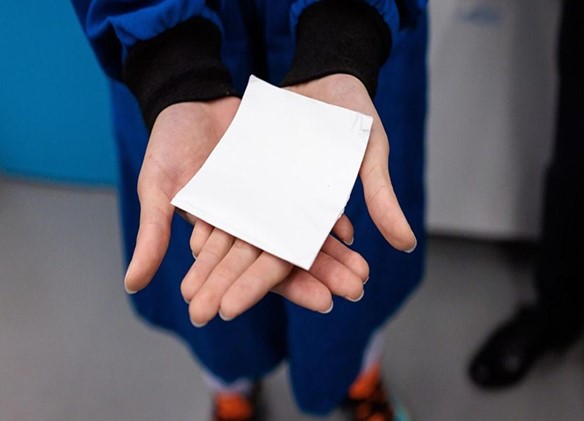
In an effort to counter rising heat waves induced by climate change, researchers have created a wearable fabric that can reduce heat from the sun and thermal radiation from nearby buildings. The fabric, named spectrally selective hierarchical fabric (SSHF), selectively emits mid-infrared radiation through a specific atmospheric window, significantly reducing heat absorption from the environment.
According to researchers at the University of Chicago Pritzker School of Molecular Engineering (PME), their advanced fabrics have applications in clothing, but also in building, car design and food storage.
In order to prevent blinding bystanders, existing cooling fabric for outdoor sports reflects sunlight in a dispersed pattern. However, there are other heat sources besides the sun in an urban heat island. Thermal radiation from pavement and buildings impacts city dwellers with heat from below and to the sides as the sun bakes from above.
“People normally focus on the performance or the material design of cooling textiles. To make a textile that has the potential to apply to real life, you have to consider the environment,” said Ronghui Wu, a postdoctoral researcher at PME and the study’s co-author.
For example, when people are standing in the sun, they likely wear materials that reflect direct sunlight, but only about three percent of their clothing—such as hats, shoulder coverings, and the tops of their shoes—actually face direct light. The remaining 97 percent of their clothes are heated by thermal radiation from the sides and below, which regular fabrics that emit heat broadly cannot counteract.
Furthermore, the sun and the sidewalk produce different types of heat, presenting a significant engineering challenge. The team needed to create a material that could protect wearers from both types of heat effectively. Since solar light is visible and the thermal radiation from buildings and pavement in an urban heat island is infrared, the researchers had to design the fabric to simultaneously have two different sets of optical properties.
The SSHF design has three layers: a top layer that lets certain heat escape into the atmosphere, a middle layer made of silver nanowires that block heat from coming in, and a bottom wool layer that transfers heat from the skin to the middle layer. Due to its unique nano-micro fiber structure, the SSHF reflects 97 percent of sunlight. Tests showed that the material keeps 2.3 degrees Celsius (4.1 degrees Fahrenheit) cooler than outdoor endurance sports fabric and 8.9 degrees Celsius (16 degrees Fahrenheit) cooler than commercialized silk.
Apart from being used in textiles, the PME team’s innovative textile can serve as a passive cooling system to supplement more expensive and energy-intensive systems. Researchers claim that its use extends far beyond apparel. To lower interior temperatures and lessen the expense and carbon footprint of air conditioning, a thicker version of the cloth covered in an imperceptible layer of polyethylene may be applied to the sides of cars or buildings.
The material might also be utilized to carry and preserve items like milk that would otherwise go bad in the heat, reducing the need for refrigeration. “You can save a lot of cooling, electricity and energy costs because this is a passive process,” said Chenxi Sui, a PhD candidate at PME and the study’s co-author.
The study details of the team’s study on the topic were published in the journal Science.
 TEXTILES.ORG
TEXTILES.ORG


